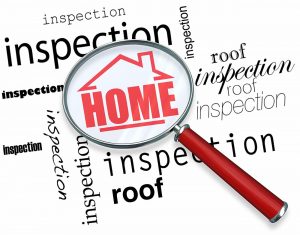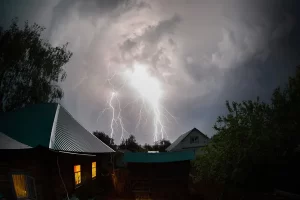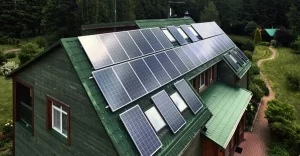If your roofing is not older and you see some free or destroyed shingles, you could change them. But for vaster or even more comprehensive issues, it is probably the moment for the new roofing. The secret is a routine roofing evaluation to make you aware of what is manifesting up there.
The best way to spot roofing problems
Rooftop problems will come in all varieties. Know things to look for.
Attic leaks
Check your attic space after severe weather. A seepage problem could mean a couple of shingles are damaged, the underlayment — a protecting guard sandwiched between your shingles as well as the plywood of your roofing — has failed, or flashing — the fabric that fastens joints on your roofing — has degenerated.
Bubble-like or shedding paintwork
Inadequate ventilation might cause dampness to become stuck in your residence, which might provoke the external paint to peel off and blister.
Roofing and wall structure stains
Leaks from the outside of your residence or dampness trapped inside may cause stains and perhaps mold or mildew.
Sheathing decay
An extra challenge with bad air-flow and dampness inside your tiers of roofing components is the decomposition of sheathing — also known as decking — which is the covering of plywood that shapes the roofing base. When you notice a drooping ceiling, ruined rain gutters, leaks, or absent spots of shingles, your sheathing could be destroyed.
Shingle issues
When shingles are nearing the end of their lifespan, you could notice they drop off or come to be cracked, breakable, or curled, which implies it can be time to get brand new roofing.
Dark stripes bands
It could appear like grime, but darker stains on your shingles could be moss, lichen, or blue-green cyanobacteria. This may not need new roofing, but if you decide to change your shingles, demand safety, which is available on many shingles.
The best way to execute a roofing evaluation
Carrying out regular assessments of the roofing — virtually if you reside in a place that experiences severe weather — can help you avoid external devastation from creating internal issues.
Begin internally
Check around your attic space for indications of leakages, brown spots, openings, or drooping sheathing
Check your ceilings for stains, mold, or mildew
Begin at the outermost area
Supposing you’re good with going up a step ladder, you can see the roof in close proximity. Alternatively, you can perform a somewhat in-depth evaluation starting from the ground, utilizing binoculars.
Get rid of vegetation and debris out of rain gutters and downspouts, analyze them for drooping or leaks.
Look in covered places, such as the underbelly of eaves and fascia — the plank that joins your roof to the external surfaces of your dwelling — for degeneration or indications of pet invasion.
Head to the street
With this range, try to find brown spots, missing shingles, or sagging.
Find out if the outer layer of paint is blistering or peeling
If you live inside a location with icy or snowy winters, keep an eye out for ice dams — layers of ice that develop near the limit of the roof — since if running water cannot empty off the roofing, it may well leak into your residence.
Examine the roofing
Check for cracked, split, bent, or absent shingles and popped or rusted nails.
Look for opened up seams or junctions and make sure roofing outlets aren’t protected or jammed.
Be aware of places that slack or appear unsound.
Ensure the piping and roofing penetrations, such as your chimney or skylights, are enclosed and do not have bare nails.
Ensure the flashing, which is used to bind joints and keep water away from them, is not ruined or offers an inadequate shield.
Take care of your roofing
Learn how old your roof is. If you didn’t install it and you’re unclear, examine the evaluation document from when you obtained your property. You can also inquire from a roofing contractor or architectural examiner to check out your roof and evaluate its years and situation.
Examine your roofing twice yearly, one time in spring, once in the fall season. Work with a step ladder to access it, check out troubled places, and check your attic space for any devastation. Not feeling like doing it? Reaching out to a professional roofing contractor for support inspecting is usually the most recommended alternative.
Look at the properties around you — they feel the same climate your residence does and is perhaps built around the same time frame. In case your neighbors are getting spanking new roofing, perform a roofing evaluation to ascertain if your property needs one as well.
Following numerous weather events, for instance, mighty winds or even a hailstorm, examine for outermost surface devastation when it’s all right.







